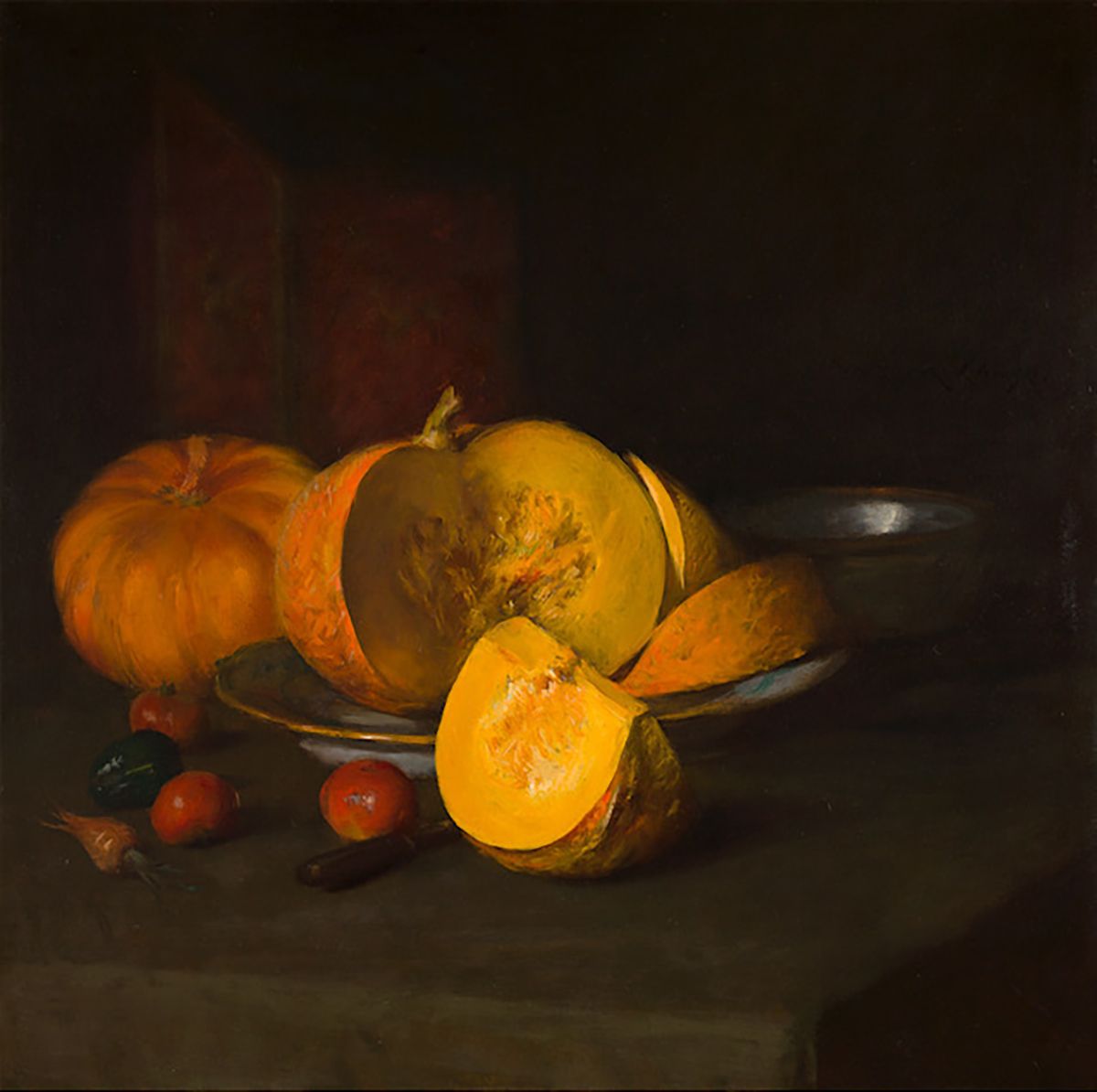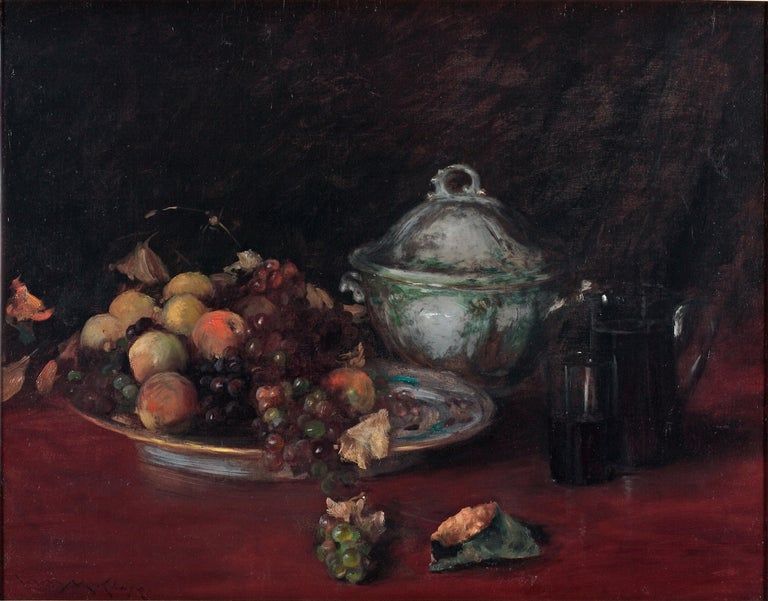William Merritt Chase (1849–1916)
Autumn Still Life, c. 1906
Oil on canvas
McMullen Museum of Art, Boston College, Gift of Alexandria & Michael N. Altman P’22, ’24, ’26, 2022.113

John McCoy
Assistant Director, McMullen Museum

The genre of still life—paintings depicting flowers, fruits, vessels, and other arranged, inanimate objects—became codified in Dutch painting in the sixteenth century. Through the domestic subject matter, an artist expressed ideals of abundance and taste, and sometimes allegorical meaning. A popular form for collectors, it was not granted much esteem. The Académie de peinture et de sculpture, which since its founding in 1648 dictated artistic taste and style through much of Europe, ranked still life as the lowest form of painting. But the genre’s reputation changed in the latter half of the nineteenth century, when impressionist and post-impressionist painters, interested primarily in capturing the psychology of vision, painted commonplace bourgeois scenes. For these painters, still life was an equally appropriate form as any other.
William Merritt Chase is widely credited for bringing impressionism to America. He shared with the movement’s other artists not only a painterly, light-focused style, but also an egalitarian approach to subject matter. The fruits of Autumn Still Life were chosen as an opportunity to employ lush colors and broad strokes on a large canvas. While this is not an allegorical painting, Chase’s choice of subjects—pumpkins, pomegranates, and what appears to be a parsnip and a dark bell pepper—is still full of meaning.
Pumpkins, while cultivated globally, are native to the Americas and strongly associated with the harvest season, as they only reach maturity in fall. Pumpkins must be cooked to be edible, but here Chase presents raw wedges, drawn perhaps to the lattice of strands and seeds that make up the core of the fruit and are suited to his loose and expressive brushwork.
Pomegranates also indicate the change of seasons. The fruit features in the myth of Hades, Persephone, and Demeter: its characteristic arils play a decisive role in the story of how autumn and winter came to be. Their cultivation is an inversion of the pumpkins, as pomegranates, while grown worldwide, are native to the Mediterranean. Chase himself was from the American Midwest but his career brought him to study in the artistic centers of Europe. His choice of objects reflects his cosmopolitan orientation. Chase traveled to Venice in 1877 and eventually purchased a villa outside of Florence in 1910, located next to a grove of pomegranates. He painted the fruit on many occasions (see image).

